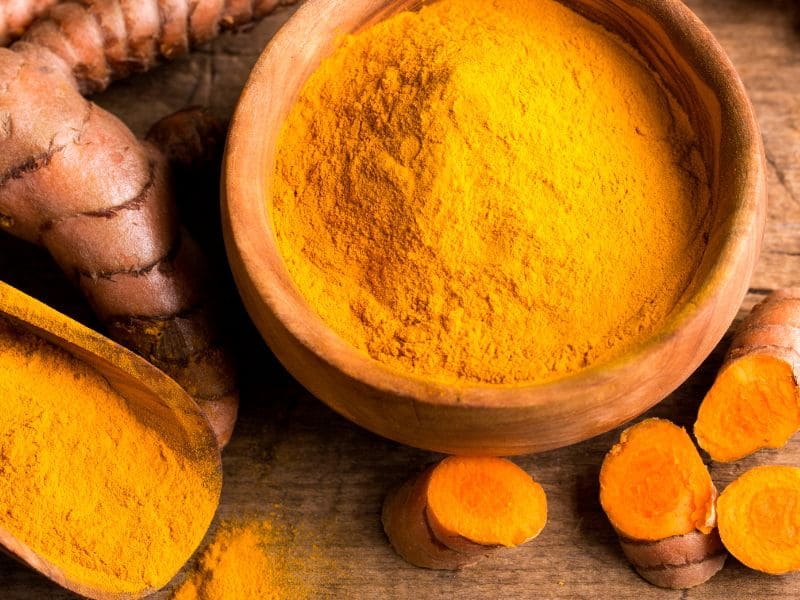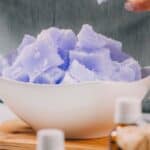This guide will walk you through the process of adding just the right amount of turmeric to your soap, ensuring a stunning color and reaping its fantastic skin benefits. We’ll cover everything from choosing the perfect amount of turmeric, mixing it into your soap base, and even some tips for creating the best turmeric soap possible. So, how much turmeric do you add to MP soap?
You can add 1/4 to 1/2 teaspoon of turmeric per pound of melt and pour soap base. Gradually increase the amount for more vibrant color and enhanced benefits, but avoid adding too much to prevent staining or irritation.
Turmeric has a lot of benefits in soap, it offers anti-inflammatory and antioxidant properties, promoting healthy skin. It helps soothe irritation, combat acne, and reduce redness. Its natural color adds a beautiful, vibrant hue, creating an eye-catching and skin-loving homemade soap.
Let’s take a look at how you can mix turmeric into your melt and pour soap base.
Choosing the Right Amount of Turmeric
When adding turmeric to your melt and pour soap, it’s important to start with a small amount. Begin by adding 1/4 to 1/2 teaspoon of turmeric powder to your melted soap base.
This allows you to gauge the color intensity and avoid adding too much at once.
As you mix the turmeric into the soap base, observe the color change. You can gradually increase the amount of turmeric if you desire a more vibrant yellow hue. Remember, a little turmeric goes a long way, so add in small increments to achieve the perfect shade.
Besides color, turmeric also offers skin benefits like soothing inflammation and providing antioxidants. By adjusting the amount of turmeric, you can tailor the soap to your skin’s needs.
However, be cautious not to overdo it. Too much turmeric may cause skin staining or irritation. The excessive amount could also leave a grainy texture in your soap, making it less appealing to use. Always remember that moderation is key when working with potent ingredients like turmeric.
What Kind of Turmeric Do You Add To Soap?
It’s essential to choose the right type of turmeric to ensure the best results.
Get organic, high-quality turmeric powder to add to your soap, as it provides maximum benefits and a vibrant, natural color to your soap. Avoid using fresh turmeric root, as it may introduce excess moisture and might not mix as evenly into the soap base.
Turmeric powder is derived from the dried, ground rhizomes of the Curcuma longa plant. It contains an active ingredient called curcumin, which is responsible for its yellow color and numerous health benefits. Using high-quality turmeric powder ensures a higher concentration of curcumin, which translates into better skin benefits and a more vibrant color in your soap.
When selecting turmeric powder, look for reputable brands that offer organic, pure, and additive-free products. This ensures that you’re using a safe and natural ingredient free of pesticides or other harmful chemicals.
Mixing Turmeric with Melt and Pour Soap
Melting the Soap Base
To start, cut the melt and pour soap base into small cubes to ensure even melting. Place the cubes in a microwave-safe bowl or a double boiler.
If using a microwave, heat the soap base in 30-second intervals, stirring after each until fully melted.
Alternatively, you can use a double boiler to melt the soap base over low heat, stirring occasionally.
Blending Turmeric into Soap
Once the soap base is fully melted, carefully remove it from the heat source. Allow the soap to cool slightly before adding turmeric, as extreme heat can diminish the benefits.
Begin by adding 1/4 to 1/2 of a teaspoon of turmeric powder to 1/4 to 1/2 of a teaspoon of 99% isopropyl alcohol and mix thoroughly.
Once the turmeric and the alcohol are mixed you can begin working it into your soap base using a spatula or spoon.
Make sure to scrape the sides and bottom of the bowl to incorporate any settled turmeric.
Ensuring Even Distribution
For a smooth and evenly colored soap, it’s essential to mix the turmeric well. Stir the soap base and turmeric mixture for a few minutes, ensuring there are no clumps or streaks. If necessary, use a whisk or immersion blender to break up any stubborn lumps.
Be gentle to avoid creating too many air bubbles, which can lead to an uneven texture in your finished soap.
It’s helpful to let the mixture rest for a minute or two, allowing any air bubbles to rise to the surface. You can then gently pop them with a toothpick or by lightly tapping the side of the bowl.
Pouring and Setting the Soap
Pouring Soap into Mold
Once the turmeric is evenly distributed in the soap mixture, it’s time to pour it into your chosen soap mold. Carefully pour the mixture into each cavity, ensuring they’re filled to the desired level.
You can use a silicone spatula to scrape the bowl and avoid wasting any soap. To minimize air bubbles, pour the mixture slowly and steadily.
Cooling and Hardening Process
After filling the mold, let it sit undisturbed on a flat surface to ensure even cooling and hardening. Depending on the size and shape of your mold, the soap may take anywhere from 2 to 4 hours to fully set.
To speed up the process, you can place the mold in the refrigerator, but avoid the freezer, as it may cause the soap to sweat later.
Removing Soap from Mold
Once the soap has hardened, it’s time to remove it from the mold. Gently press on the sides of the mold to release the soap, or turn it upside down and tap it lightly if needed.
For rigid molds, you may need to use a butter knife to carefully loosen the edges before popping the soap out.
Tips for Better Turmeric Soap
Use High-Quality Turmeric Powder
The quality of turmeric powder plays a significant role in the final product. Opt for organic, high-quality turmeric to ensure maximum benefits and a vibrant color.
Preventing Clumps in the Mixture
To avoid clumps, sift the turmeric powder before adding it to the soap mixture. You can also mix the turmeric with a small amount of glycerin or rubbing alcohol before adding it to the melted soap base.
This helps create a smoother, more even distribution.
Experimenting with Other Natural Additives
Enhance your turmeric soap by incorporating other natural ingredients like essential oils for fragrance, dried flowers for visual appeal, or additional skin-loving additives like honey, oatmeal, or aloe vera.
Don’t be afraid to get creative and customize your soap to suit your preferences and needs.
Frequently Asked Questions
Sift the turmeric powder before adding it to the soap base or mix it with glycerin or rubbing alcohol to create a smoother consistency.
Using a moderate amount of turmeric (1/4 to 1/2 teaspoon) should not cause staining. However, using excessive amounts might temporarily stain the skin.
Depending on the mold’s size and shape, turmeric soap can take 2 to 4 hours to harden at room temperature. Refrigeration can speed up the process.
Yes, you can create a swirl pattern by partially mixing turmeric into the soap base, then pouring the mixture into the mold.
Conclusion
In conclusion, incorporating turmeric into your melt and pour soap is a simple yet effective way to create a beautiful, natural, and skin-loving product. By following our step-by-step guide, you’ll be able to harness the incredible benefits of turmeric while crafting a soap that’s perfect for your needs.
Remember to start with a small amount of turmeric and adjust accordingly for the desired color and benefits. Don’t hesitate to experiment with other natural additives and techniques to make your turmeric soap even more unique.
Now that you’re equipped with the knowledge and tips for making the perfect turmeric soap, it’s time to embark on your soap-making journey and enjoy the amazing results. Happy crafting!






